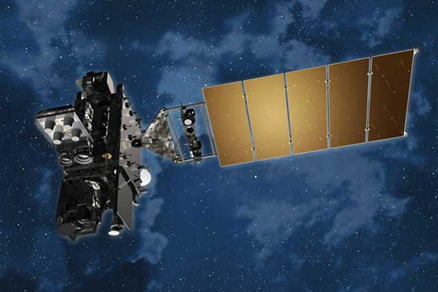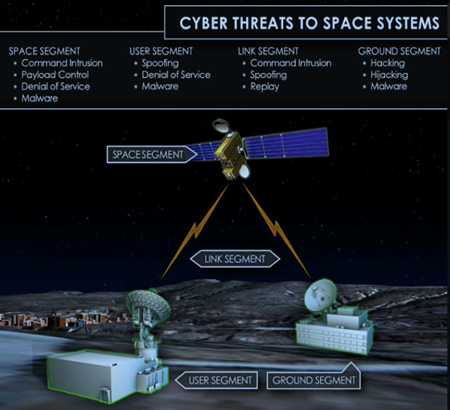Cyber Warfare in Space: Securing Satellites from Hackers and Cosmic Threats
- Jukta MAJUMDAR

- 4 days ago
- 4 min read
JUKTA MAJUMDAR | DATE May 06, 2025
Introduction

As Earth’s digital infrastructure expands beyond terrestrial borders, space is no longer a distant frontier—it’s a new battlefield for cyber warfare. Satellites, once used exclusively for communication, weather forecasting, and navigation, now form the backbone of modern life. From GPS systems and military operations to global banking and supply chain logistics, satellite infrastructure is deeply woven into the global fabric. But with this dependency comes a grave risk: satellites are increasingly vulnerable to cyberattacks, GPS spoofing, and geopolitical sabotage. Securing orbital assets is no longer optional—it is essential for national security, commercial stability, and even personal safety.
The Growing Threat to Satellite Communication
Satellites rely on radio signals and ground stations to function, and these communication links can be intercepted, manipulated, or jammed. One of the most pressing concerns is GPS spoofing, where hackers transmit false signals to trick GPS receivers into reporting incorrect locations. This tactic has been used to redirect commercial ships, mislead military drones, and disrupt civilian navigation systems.

Cybersecurity vulnerabilities in satellite firmware, outdated encryption protocols, and unsecured ground station interfaces open the door to serious breaches. Many legacy satellites, launched decades ago, were not designed with cyber threats in mind. Yet they still operate critical services. A well-coordinated cyberattack could disable or manipulate satellite functions, disrupt military communications, cause blackouts in financial systems, or blind Earth-observation networks during a crisis.
Nation-State Threats and Orbital Infrastructure
As geopolitical tensions rise, space has become a new theater for competition between technologically advanced nations. Cyber warfare has shifted from attacking data centers to targeting the satellites that transmit data between continents. Nation-state actors now seek to gain strategic advantage by disrupting or disabling orbital infrastructure, either through direct hacking or electronic warfare tactics like signal jamming and denial-of-service attacks on satellite control systems.
In recent years, reports have surfaced of sophisticated attempts to compromise satellite communications of defense organizations and private space companies. These cyber intrusions are often carried out by advanced persistent threats (APTs), who meticulously exploit vulnerabilities over time. The implications of such attacks range from compromised surveillance data to the weaponization of space assets.
Cosmic Threats and the Cyber-Physical Link

Beyond malicious hackers, space-based infrastructure faces environmental and physical threats that have cyber implications. Solar flares, space debris collisions, and radiation storms can damage satellite hardware and disrupt data transmissions. When a satellite’s systems are compromised—whether by nature or by adversaries—the consequences cascade down to Earth, affecting navigation, communications, aviation, and emergency response.
Space cybersecurity is uniquely complex because it merges the physical challenges of operating in space with the digital risks of cyber intrusion. The long distances and limited ability to patch or repair satellites remotely add to the challenge. Unlike terrestrial systems, a compromised satellite cannot simply be unplugged or rebooted without significant planning and coordination.
The Push Toward Space Cybersecurity Policies and Treaties
Recognizing the urgency of these threats, governments and international agencies are beginning to explore frameworks for securing space-based assets. Emerging space cybersecurity treaties and intergovernmental alliances aim to set standards for encryption, authentication protocols, and cybersecurity incident response. Efforts are also being made to encourage information sharing between private satellite operators, defense agencies, and cybersecurity experts.
The United Nations Office for Outer Space Affairs (UNOOSA), along with national space agencies, has started discussions around space traffic management and cyber risk mitigation. While still in early stages, these dialogues highlight the need for a coordinated global approach to prevent conflict in orbit and secure critical infrastructure.
Conclusion
Cyber warfare in space is no longer science fiction—it’s a present-day concern with far-reaching consequences. The fusion of digital and orbital infrastructure demands a new class of defense strategies that address both cyber vulnerabilities and space-specific threats. As satellites become increasingly vital to global stability, nations and corporations must act decisively to secure them against hackers, hostile states, and even natural cosmic phenomena. Investing in space cybersecurity isn’t just about protecting data—it’s about preserving peace, functionality, and safety on Earth.
Citations
Johnson, A. R., & Garcia, M. (2023). Space cybersecurity: Securing critical satellite infrastructure. Center for Strategic and International Studies (CSIS). https://www.csis.org/analysis/space-cybersecurity
National Air and Space Intelligence Center. (2022). Competing in space. U.S. Air Force. https://www.nasic.af.mil/Portals/19/documents/Competing%20in%20Space.pdf
U.S. Government Accountability Office. (2022). Satellite cybersecurity: Federal agencies need to strengthen efforts to address growing threats. https://www.gao.gov/products/gao-22-105679
United Nations Office for Outer Space Affairs. (n.d.). Space traffic management and cybersecurity. UNOOSA. https://www.unoosa.org/oosa/en/ourwork/topics/space-traffic-management.html
Netenrich. (n.d.). The Netenrich guide to cybersecurity mesh architecture (CSMA). Netenrich. https://netenrich.com/resources/the-netenrich-guide-to-cybersecurity-mesh-architecture-csma/
Federal Reserve Financial Services. (2024, March). Synthetic identity fraud mitigation toolkit: Generative AI supplement. FedPayments Improvement. https://fedpaymentsimprovement.org/wp-content/uploads/sif-toolkit-genai.pdf
Connolly, A. (2024, April 23). Synthetic identity fraud: How AI is changing the game [Interview]. Federal Reserve Bank of Boston. https://www.bostonfed.org/publications/six-hundred-atlantic/interviews/synthetic-identity-fraud-how-ai-is-changing-the-game.aspx
Humphreys, T. E. (2019). Statement on GPS spoofing and its implications for national security. U.S. House Committee on Homeland Security. https://homeland.house.gov/imo/media/doc/Testimony-Humphreys.pdf
U.S. Department of Defense. (2021). Defense Space Strategy Summary. https://media.defense.gov/2020/Jun/17/2002317391/-1/-1/1/2020_DEFENSE_SPACE_STRAT
Purdue OWL. (n.d.). APA formatting and style guide (7th edition). Purdue University. https://owl.purdue.edu/owl/research_and_citation/apa_style/apa_formatting_and_style_guide/general_format.html
Image Citations
Why Space Cyber? (2021, March 4). Center for Space Cyber Strategy and CyberSecurity - University at Buffalo. https://www.buffalo.edu/space-cybersecurity/center/why-space-cyber.html
adminMP. (2025, March 26). Cyberwarfare in Space: satellites protection - Max Polyakov. Max Polyakov. https://maxpolyakov.com/cyberwarfare-in-space-protecting-satellites-from-cyber-attacks/
How cyberspace has become the new battleground in modern day warfare. (n.d.). UNSW Sites. https://www.unsw.edu.au/newsroom/news/2022/03/how-cyberspace-has-become-the-new-battleground-in-modern-day-war





Comments